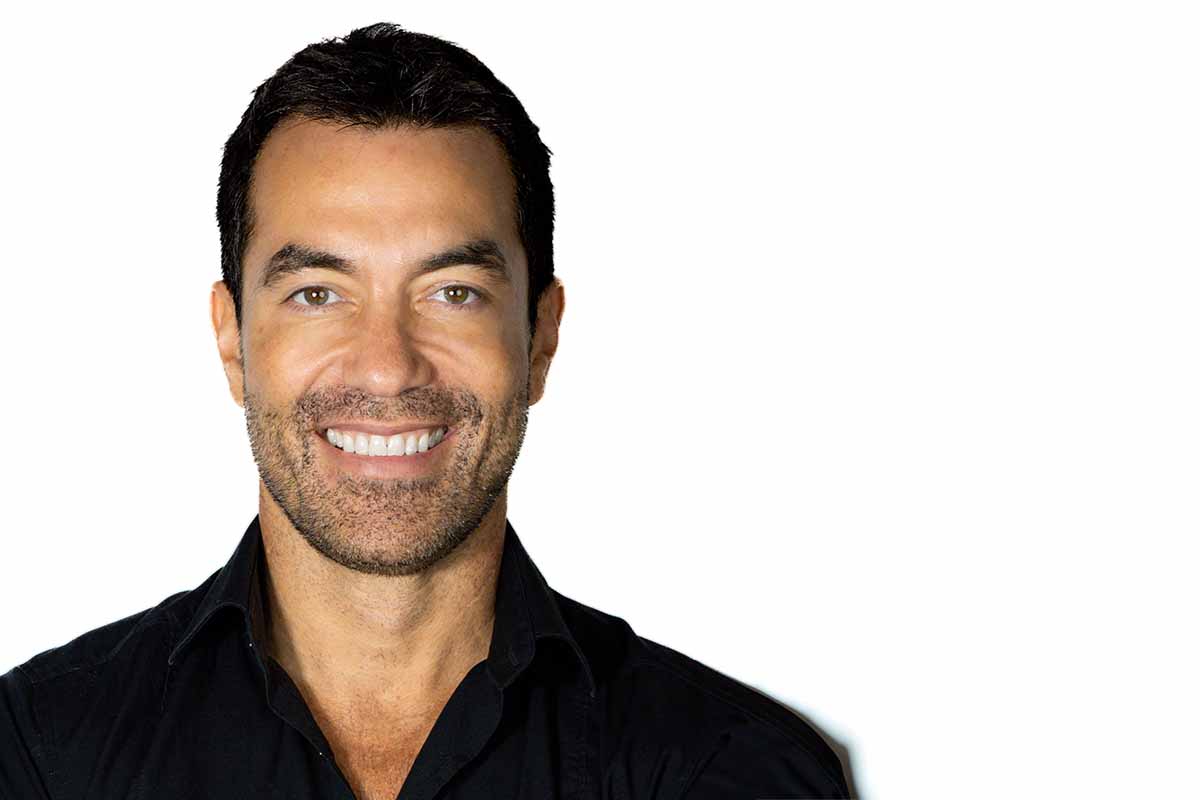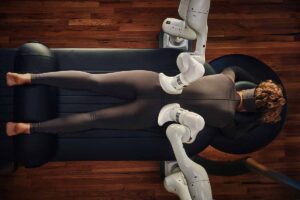
We spoke with Eric Litman about his journey, Aescape’s mission, and the challenges robots can help resolve in the hospitality and wellness industries.
Eric Litman, the visionary behind Aescape, is pioneering the integration of AI and robotics into wellness to deliver personalized, high-quality massage experiences. He founded Aescape in 2017 with a leadership team that includes experts from Amazon, Uber, and Meta, aiming to revolutionize self-care through AI-driven robotics. In spring 2024, Aescape launched its first fully automated, customizable massage experience, recently rolling out at 10 Equinox locations in New York City and the ila Only Spa at Lotte New York Palace. The company also made its Miami debut and first installation outside of New York at the Privai Spa at Kimpton Epic Hotel. Supported by $80 million in funding, Aescape addresses gaps in the market by leveraging cutting-edge AI and human insights to provide wellness solutions tailored to individual needs.
Asked about the driving force behind designing a massage robot, Mr. Litman said, “I have been building tech companies for as long as I’ve been employed. Aescape is in many ways the culmination of my experiences over the years and the representation of my biggest passions in life, which are my own personal wellness and health journey and in bringing technology and data-backed solutions to the improvement of our wellbeing.”
We spoke with Eric Litman about his journey, Aescape’s mission, and the challenges robots can help resolve in the hospitality and wellness industries.

Can we talk more about where the idea for Aescape came from?
Yes. I’ve been computing since I was very young, and along with that have been implementing all the common practices of hunching over with poor posture and poor body position, while also being very athletic. Plus, I’ve also spent a lot of time on airplanes. The combination of those things really put a toll on my spine and I spent eight months of my life needing a massage every day to address the very specific problem of a bulging disc. I got massages in every country and every location you can imagine, and it often didn’t solve the problem. This is how I learned about the challenges of finding high quality people to deliver great massages, and it seemed like there was an opportunity to bring in an alternative solution that would let people like me, with a very specific need, get what they want.
It’s a very different product from a massage therapist and we are intentionally not trying to replicate a massage therapist. The two will live side by side and do different things for the world. We are here for the people that want to self direct their care and who are looking for specificity and consistency no matter where they go. There’s never any guesswork.
Can we go a bit further into the challenges this technology addresses for the industry?
Interestingly, if you look at the annual ISPA PWC report, they say that about one in five US adults got a massage in the last 12 months. Our research has shown there’s about another one in five who say they would get regular massages if it wasn’t from a person, because of issues like body sanctity, body dysmorphia, and anxiety with strangers of the same or opposite gender. We see that here all the time. We have people come in for Aescape massages that have never had a massage with a person before, never wanted one, and they love it and come back as repeat members.
There are obviously benefits to working with a massage therapist, but there are not enough people to meet demand, and what happens is the people who are particularly good at the job feel the squeeze because they end up picking up extra shifts when there aren’t enough LMTs available. Our product creates a baseline level of availability that gives the therapists more predictability to their schedule. Plus, we believe over time this will ultimately raise the economic value for the therapist. We think therapists will be able to charge more because there’ll be a premium on high quality service from a human massage therapist. We think of ourselves as a labor augmentation.
What are some more benefits?
The robot allows an operator to rethink many of their service design choices and create new revenue opportunities. You can offer a massage at five o’clock in the morning when someone gets up early, or at 11 o’clock at night. Let’s say a traveler comes in from a long set of flights and their room isn’t ready. You could give them a drink at the bar, or you could give them a massage while you’re getting the room ready. And because it’s a clothed massage, you don’t necessarily need to put it into a spa. You can put it in an open area, maybe with a screen around the bed for some lightweight privacy. Or maybe you turn over one of the rooms, put our table in there, and now can offer wellness amenities. Your front desk staff could be the ones to guide people to the table and hand them a set of clothes. You require very little operation to go along with it.
We’re also here to help with driving utilization. We’re not just dropping off a product. We deliver a service. We help to drive demand and to smooth the demand curve throughout the day. We really partner with the places and locations where we deploy these tables.
There are other companies that have created massage robots or similar products. Why do you think we haven’t heard more from them? What makes Aescape different?
This is incredibly complex. It’s not a difficult idea to conceive of, particularly if you’ve lived in or known the industry and know about the labor shortage. But it’s very easy to vastly underestimate the complexity of building something that can function safely and autonomously around all the different body shapes and forms and all the human behaviors. It’s really hard.
So, while we definitely would say that we are one of the more advanced robotics companies on the planet, that’s not the point. The point is that we create great experiences. We think through all the details from the beginning to the end of the journey to ensure that everyone that encounters this feels like their needs have been met. And there’s just so much to that.
We have a customer satisfaction rate above 90%. Our peak user rate continues to grow even with limited availability because the tables tend to all be booked out. The market is telling us that we’ve done pretty well. Now, from our perspective, we think we’re only at the beginning and we know how much more we can do, but market feedback says we’re on a good track.
How does it work?
It’s very straightforward. You book the experience through an app, like you would book a restaurant or car service. You come into the room, you put on really cool clothes that make it so that you don’t have to have lotion or oil. You’re not showering afterwards, you’re not nude in front of a stranger or in a strange environment. You lay on the table. We have sensors that scan you into the system, make a model of your body, and use that to hyper personalize a massage. Then, as you lay on the table, there’s a big beautiful touch screen showing your body in 3D, and you can make desired changes. You’re informed at all times of what’s happening and what is going to happen next, so you’re never wondering if it’s going to get to your glutes or hamstrings. That’s all laid out for you in front of you.
And it remembers you. So, no matter which location you go back to, whether you’re at an Equinox, the Palace Hotel, or any other location into which we’ve been deployed, you have an experience that is tailored to you.
Please talk about some of those locations – where are you and where are you going to be?
We’re in Equinox and ila Only Spa at The Palace Hotel. We’re also in Previ Spa at the Kimpton EPIC in Miami. Currently we’re rolling out two to three new locations every week and will also be announcing partnerships with professional sports teams, corporate offices, and more hotels. There is quite a bit of distribution coming up.
And are you excited about any other technology in the wellness or hospitality landscape right now?
I love what people are doing with what I think of as the mitochondrial journey. So you have heat and cold and light therapy, all driving mitochondrial benefits. Those are super interesting and there’s a ton of research behind it. I love seeing more technology being integrated into fitness equipment where you can start to quantify the work that you’re doing throughout your fitness journey and access metrics to drive you and give you the insights you need to set real goals and real targets other than just showing up in a gym every day. There’s so many exciting things happening out there.
For so much of time we’ve relied upon tradition and anecdote to drive how we think about our health and what works well for our health. And we’re now at a point in time where we have a better understanding of why certain things impact us the way they do, which allows us to recraft solutions from the objective point of view. I think we’re just at the very beginning of that.



